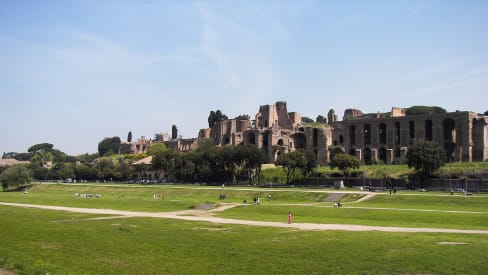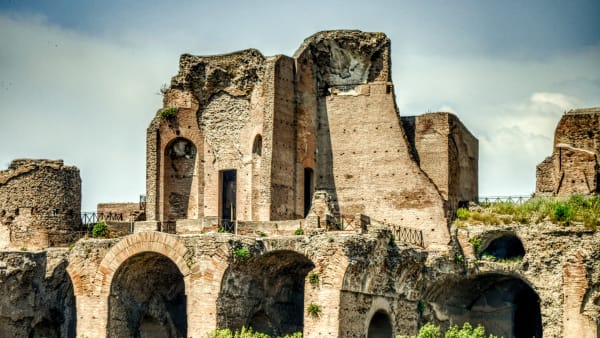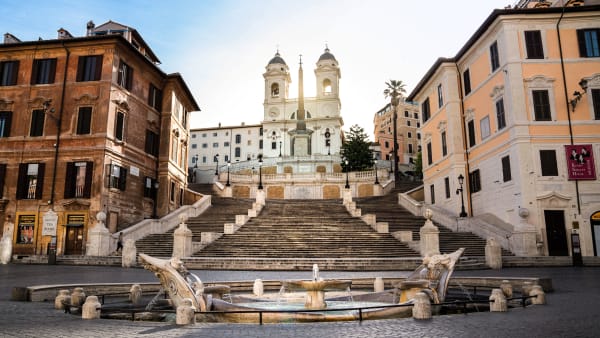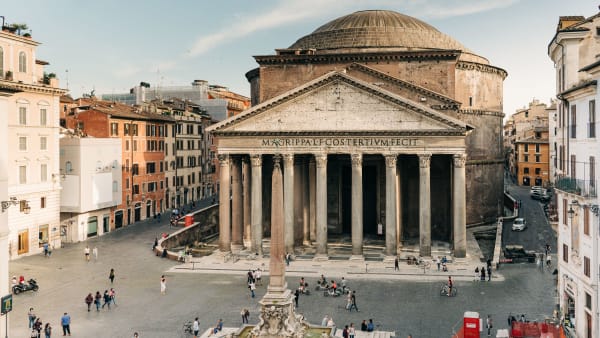Curiosities
Curiosities
Chariot races were the most popular spectator sport of Ancient Rome, even more beloved than gladiator fights. It was a traditional and accessible form of public entertainment, celebrated on each of the over 100 holidays per year.
The chariot races
The spectacle began with a procession of trumpeters, followed by the magistrate, the charioteers, and priests. They paraded along the track, going around the spina and ending in front of the pulvinar (imperial tribune). The start of the competition itself was marked by the magistrate, who threw a white handkerchief from the platform above the carceres.
The greatest difficulty in the race occurred at the moment of making turns around the spina at high speed. This is also why the races were dangerous, and sometimes deadly, for both the charioteers and horses. There was a huge risk that the chariots would overturn. For this reason, the left horse was usually the strongest and most competent.
The spectators attended the competitions with great enthusiasm and participation, which sometimes resulted in conflicts between the various teams. These clashes also ended up being politically exploited. The races ended up going beyond the meaning of mere sporting competitions and expanded their sphere of influence to the whole society.
The charioteers
The winner of a race was assured of a bright future, regardless of his social class. The crowd placed huge bets on the games and in addition to crowns and palm branches, even cash prizes were received by the victorious charioteers. They had the chance to become loved by the spectators, similar to modern sports champions. Moreover, those who won more than a thousand races were given a special name: miliarius.
One of the best *aurighi (*charioteers) in Roman history, with over 2000 victories, was Flavius Scorpus. He was a slave, as were many charioteers, and was able to become a libertus (freed slave) by buying his freedom from his prize money.
The charioteers wore leather helmets and jerkins in the colors of their fraction (white, green, red, or blue). The chariots were also color-coded and could be pulled by 4, 6, 8, or 12 horses. They had to circle the spina seven times, a total distance of approximately 11km.
The reins were tied around the chest of the charioteers so they could use their weight to steer the chariot. They also carried a dagger with them, at all times, to cut the reins in case of an accident. However, it often happened that a charioteer couldn’t cut the reins loose in time and was dragged across the racetrack by the horses—at a furious speed.
The racehorses
The horses were loved by the people. Their names were known to the public and written on mosaics, walls, cups, bronze plates, etc. Phrases such as “Vincas non vincas, te amamus Polidoxe” meaning “Whether you win or lose, we love you Polidosso” were carved into a mosaic floor in the baths of Pompeian in Numidia.
The horses wore harnesses decorated with sparkling studs and their tails were tied in a tight knot (to avoid entanglement with the reins). They were imported from farms in Italy, Greece, Turkey, Spain, and North Africa and were rigorously trained for at least two years before they were allowed to participate in a race.
Most supporters knew the exact age of their favorite horses, where they came from, how many times they had won, and with which other horses and which charioteer they formed a team.
Here’s another example of the special treatment that the animals received. Volucer, a horse of Lucius Verus, was fed with raisins and walnuts instead of barley and used to wear a purple caparison on his back. When he died, his master had a special tomb built for him. Besides, winning horses were rewarded with laurel wreaths, palm branches, and bushels full of gold coins.
Other animals
Besides the horses, there were also other animals to be admired in the Circus Maximus. In 186 BC, Marcus Fulvius Nobiliore introduced lions and leopards to the public, after returning victoriously from Greece.
From that moment, exotic animals—that were never seen before—became an essential element of public entertainment. There were various ways in which they were exhibited. From bloody fights between them (or against gladiators) to shows where they were simply put on display in large cages.
As much as many animals were praised, this also had a downside. The violent and raw aspect of entertainment led to the death of a large number of beasts. The total number of animals killed during races and games was innumerable. Only the inauguration of the Circus Maximus and that of Pompey’s theater cost the lives of more than a thousand creatures.
Ludus Troianus
Aside from chariot races, the Circus Maximus was also used for other types of mass entertainment. The Ludus Troianus, for example, were equestrian parades that simulated battles, presented by young Roman aristocrats.
The term Ludus Troianus is derived from the word “truia” which means dance or round. According to some sources, this word is also connected to the verb ”amptruare”, which indicated the evolution of the sacred war dance of the Salii priests.
A Ludus Troiae was organized at the time that Sulla resigned, and another one while Caesar was in power. However, the most famous ones were organized by Augustus.
Naumachia
The arena of the Circus Maximus was flooded with the waters of the Tiber and naval battles were recreated (navalia proelia) in which two opposing teams—composed of gladiators or prisoners of war, sentenced to death—faced each other and recalled unforgettable naval battles.
Finally, one could also watch representations of field battles (also performed by young Roman aristocrats), foot races that lasted several hours, or gladiator fights. Again, all contests were stimulated by betting and enthusiastic cheering.
The Kidnapping of the Sabine Women
One of the most famous mythical stories from the early days of Rome is the Kidnapping of the Sabine Women (also known as the Rape of the Sabine Women or the Abduction of the Sabine Women). This is the myth in a nutshell.
Young Rome had a big problem. Romulus had welcomed anyone into the city who wanted to live a different life. Resulting in a large number of new residents, mainly (male) foreigners, fugitive slaves, and exiles. Therefore, after only one generation, the city was struggling with a shortage of women.
This is how the Roman historian Titus Livius (ca. 59 BC - 17 AD) described the situation:
“Due to lack of women, Rome’s greatness would last only one generation. There was no prospect of offspring at home and no marital alliance with the neighbors. On the advice of the Senate, Romulus sent envoys to the neighboring tribes, to request collaboration including marriage rights for the new people.”
The attempt to get more women to the city failed, so the Romans decided to change course. During the Consualia, a festival that took place in the Circus Maximus, the city expected many visitors from the surrounding area. The Sabines also visited the feast with many of their women and families. At a certain point during the celebration, the Roman men rushed through the crowd looking for the most beautiful women (possible virgins) to kidnap.
The Sabines were furious and swore revenge but had to wait for a more suitable opportunity. It’s said that a total of 683 women had been taken. After the incident, Romulus asked the women to moderate their anger and give their hearts to the Roman men. He assured them that they would be treated well and that their new husbands would do their best to win their love.
A year later, the Sabines were ready to fight the Romans and take back their women. In the meantime, they had remarried to the Romans, re-found happiness, and in some cases even had children from their new husbands.
However, when they showed up in Rome, the Sabine women unexpectedly intervened. With this gesture, both sides stopped fighting and decided to collaborate—stipulating a peace treaty, on the road that for this reason would be called Via Sacra (Sacred Street).
The numerous fires
As mentioned in the historical section of this article, the Circus Maximus (and its surrounding area) was destroyed several times by major fires. There were three fires in particular: the first in 31 BC (during the reign of Augustus), the second which was many times more damaging in 64 AD (during the reign of Nero), and the third in 103 AD (during the reign of Trajan).
The damage was severe in all cases. The first fire destroyed the wooden structure of the circus but was rebuilt by Emperor Augustus. The second, better known as the Great Fire of Rome, lasted six entire days. Both the circus and most of the houses were made of wood and the streets were very narrow. This caused the fire to spread quickly through the city and only four of the city’s fourteen neighborhoods were spared.
Hereafter, a rumor spread through the city that Emperor Nero himself had caused the Great Fire. To distract the people’s attention, Nero accused a group of followers of a new faith in Rome of lighting the fire. These were the first Christians, which made Nero the first Roman emperor to have them persecuted.
The third fire in 103 AD was the final one that led to the last major rebuilding of the Circus Maximus. The stadium was now three levels high and made entirely out of stone with open arcades on the outside. It also had all kinds of stores, brothels, betting offices, etc., and the lowest part of the tribune (ima cavea) was covered in marble.















